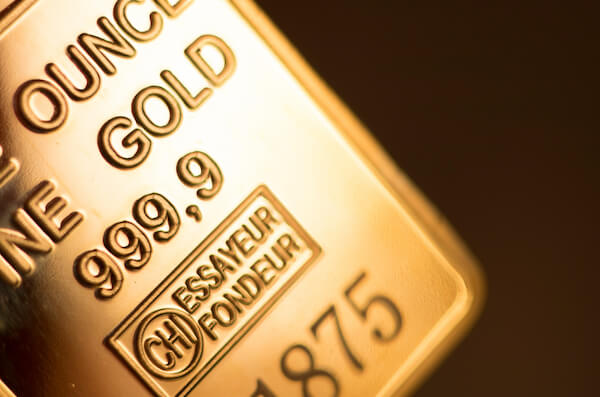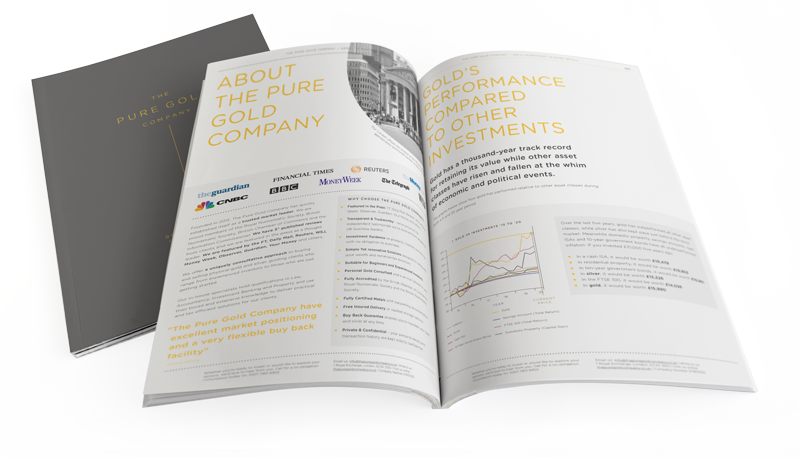The uncertainty and economic chaos caused by the COVID-19 pandemic impelled the gold price to all-time highs last year. While the price has tempered somewhat since then, it’s still high relative to the last two, five, ten or 20 years.
To properly understand gold price, relativity is key. If you look at a gold price chart for the last 6 months you’d be inclined to think it’s on a downward trend, but if you looked at it over the last two years that view is largely reversed. Meanwhile, a twenty-year gold price chart shows a steep incline that would lift the heart of any investor. So when should you buy gold? Is now the right time?
Risk register
Investors choose their strategy and asset classes depending on their level of risk. Those looking for higher risk investments might plunge into illiquid micro stocks in the hope they turn into billion-pound unicorns, but run the risk they will simmer or flounder. Others are more inclined to park their spare cash long-term in a dividend-yielding utility.
Investing in gold
Investing in gold is generally viewed as a risk-averse choice. It doesn’t pay a dividend but over thousands of years, gold has risen steadily, retaining its store of value like jewellery or currency. This venerable history of value is in stark contrast to more recent alternative investments like bitcoin, classic cars, fine wine or art, which are far more volatile.
It’s equally important to recognise that gold is an asset like any other and its short-term performance is dependent on supply and demand. It can just as easily go down as up which is why investors tend to hold gold long-term as any short-term volatility is subsumed in long-term growth.
Playing the long game
The reason gold tends to increase over the long term is its broad-based desirability. Governments are large holders of gold, initially stockpiling physical gold when their currency was backed by it, but latterly maintaining reserves to protect themselves from severe economic catastrophes (if a currency devalued quickly, gold could be sold to support its value). UK stocks are somewhat depleted though, since the then chancellor, Gordon Brown, sold a substantial tranche of British government gold twenty years ago, shortly before it started a long bull run.
There are also many institutional and retail investors of gold. They buy it to store their wealth for the future, safe in the knowledge that over time the yellow metal has maintained its value. They buy it in the form of jewellery; a popular gift and store of wealth in India in particular. They also invest in gold as a hedge against inflation, a hedge against uncertainty or a tool for investment diversification.
Gold and inflation
Gold is used as a hedge against inflation because governments are forced to inject new money to support the economy during events like the pandemic, and as the money supply expands, more people demand the same goods so prices rise. But when there is more money in circulation, it devalues the currency, so it takes more of the devalued currency to buy the same amount of gold, pushing up the price.
For this reason, gold is often cited as an inflation hedge, because it maintains its value even when inflation devalues the currency. Like interest rates though, in practice, this link is not indelible. There are circumstances where other factors influence gold price more than inflation, from market sentiment to geopolitical issues, to price speculation.
As an uncertainty hedge, gold has an excellent track record, and the past year is a case in point. As lockdowns shut national economies and the pandemic worsened, gold began a rise that would take it to its highest-ever levels, peaking at £1,574.37 on 7 August last year.
Despite some easing of COVID infections as the northern hemisphere summer got underway, the fear and uncertainty around the pandemic and the effects on global economies was enough to impel the yellow metal to new highs.
The many motivations for buying and holding gold maintain robust demand and have helped preserve its long-term store of value which enhances its role as a diversifying asset in a portfolio.
Buying at the top
So even if the intention is to hold onto your gold for the long term, is it right to buy at the top end of the market? Firstly this isn’t technically the top end anyway. Since the peak in August last year, the gold price has retreated to pre-pandemic levels, reflecting a waning of the most acute uncertainties surrounding the pandemic.
In addition, the same topic is debated every year, and yet the long-term trend is always upwards. If you wait for the perfect moment to invest in anything you could be waiting forever, and with gold, there is the added impetus of historical upward momentum.
In addition, the same topic is debated every year, and yet the long-term trend is always upwards. If you wait for the perfect moment to invest in anything you could be waiting forever, and with gold, there is the added impetus of historical upward momentum.
Alternatives also riding high
If top-of-the-market concerns are holding back gold investment then they would also have to hold back other investment opportunities too. The three main US stock market indices have been on a relentless bull run, interrupted only briefly through the initial phase of the pandemic, and frequently test new highs.
Across the pond, the FTSE 350 is still on the road to recovering the first pandemic losses, but its trajectory has been upward for the past year. The same can be said for the very frothy bitcoin price and market. Volatility is nothing new in the cryptocurrency world but even by these standards the leading digital currency has seen explosive gains. Peaking at over $60,000 earlier in March, bitcoin has also been repeatedly testing and surpassing record highs.
Should you wait?
When the pandemic hit, the global economy was still not entirely recovered from the hangover of the financial crisis. In the UK, the long-term effects of austerity cuts and quantitative easing were still being felt. Compounding this, the government has needed very deep pockets to avoid a corporate and social catastrophe.
The UK government will have spent £355 billion in the fiscal years 2020-21 according to the Office for Budget Responsibility, a peacetime high, and this has served to prop up social and economic viability. Many of the support measures have been extended beyond June, and this will cost the country a further £234 billion in the forthcoming fiscal year.
Rishi Sunak, the chancellor of the exchequer, has acknowledged the debt burden and the need to rebalance the economy, but can’t risk stifling any recovery by gilding the coffers with tax receipts. This has kicked the can down the road for the next decade, a decade in which the value of gold will continue to do what it has done for thousands of years.


